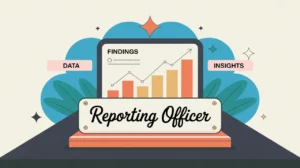What Does the Monitoring Assistant Role Involve?
A monitoring assistant supports the collection, entry, and management of data that tracks program activities, outputs, and outcomes. This includes gathering information from the field or program teams, maintaining databases, conducting basic checks for accuracy, and supporting the preparation of monitoring reports. The role typically sits within MEL (Monitoring, Evaluation, and Learning), program delivery, or data functions. In nonprofits and social enterprises, monitoring assistants play a foundational role in ensuring that reliable data is available to assess performance and inform program improvements.
At What Level does this Role Operate?
Entry Level: This role typically reports to a monitoring officer, MEL associate, or MEL manager. It focuses on data collection and maintenance, with opportunities to build analytical and evaluation skills over time.
Relative Employability: Monitoring assistant roles are common across nonprofits, social enterprises, development agencies, and international NGOs. They provide accessible entry points for individuals interested in evidence, program quality, and data systems.
Relative Pay Scale: Monitoring assistant roles fall within entry-level pay bands, reflecting their support functions and foundational responsibilities in MEL systems.
What are the Key Responsibilities and Activities?
- Collect program data from field teams, beneficiaries, partners, or digital systems
- Enter data accurately into databases or monitoring platforms
- Conduct basic data quality checks and flag discrepancies or missing information
- Support the maintenance and updating of monitoring databases and dashboards
- Assist with the preparation of regular monitoring reports and summaries
- Provide logistical support for data collection activities, including scheduling and coordination
- Work closely with MEL and program teams to ensure data flows are timely and accurate
What Core Competencies and Qualifications are Needed?
Required Qualifications and Experience
The following reflect common qualifications and experience expected for this role, while recognizing that pathways may vary by context, organization, and region.
- Educational background in statistics, social sciences, economics, development, or equivalent experience
- Familiarity with data collection methods and basic data management practices
- Attention to detail and commitment to data accuracy
- Ability to use spreadsheets, databases, or basic monitoring software
- Good communication and organizational skills
- Interest in MEL, data systems, and program improvement
Key Competencies
- Data collection and entry
- Database maintenance and data quality assurance
- Basic monitoring and reporting support
- Logistical coordination for data collection
- Collaboration with MEL and program teams
How are AI and Automation Shaping this Role?
An AI-native monitoring assistant will look to AI and automation to make data collection and entry more efficient and accurate. They can use digital tools with automated validation checks, AI-powered transcription for field data, and automated syncing between data collection platforms and databases. By leveraging these tools, monitoring assistants can reduce errors, speed up reporting timelines, and contribute more meaningfully to data quality assurance processes.
What Career Pathways and Transferable Skills are Associated with this Role?
Monitoring assistant roles can lead to positions such as MEL associate, monitoring officer, data associate, or evaluation assistant. The skills developed in data collection, management, and quality assurance are highly transferable across nonprofits, social enterprises, development agencies, and research organizations. This role provides a strong entry point into MEL and evidence-related careers.







